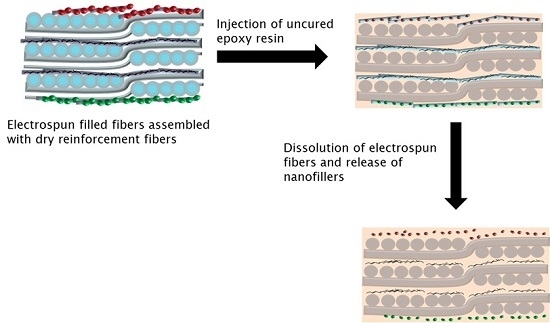PES/POSS Soluble Veils as Advanced Modifiers for Multifunctional Fiber Reinforced Composites
Abstract
:1. Introduction
2. Experimental
2.1. Materials and Methods
2.1.1. Materials
2.1.2. POSS Synthesis
2.1.3. Electrospun Veils Preparation
2.1.4. Composites Manufacturing
2.2. Characterization
2.2.1. Hot Stage Microscopy Analysis of the Veils’ Dissolution into the Unmodified Epoxy Matrix
2.2.2. Dynamic Mechanical Analysis (DMA) of Cured Composites
2.2.3. Scanning Electron Microscopy (SEM)
2.2.4. Thermogravimetric Analysis (TGA)
3. Results and Discussion
3.1. Effect of POSS Addition on Veil Quality
3.2. Veil Dissolution in Neat Epoxy and Morphological Analysis of the Cured Composites
3.3. DMA Properties of Composites
3.4. Thermal Stability
4. Conclusions
Acknowledgments
Author Contributions
Conflicts of Interest
References
- Akangah, P.; Lingaiah, S.; Shivakumar, K. Effect of Nylon-66 nano-fiber interleaving on impact damage resistance of epoxy/carbon fiber composite laminates. Compos. Struct. 2010, 92, 1432–1439. [Google Scholar] [CrossRef]
- Palazzetti, R.; Zucchelli, A.; Gualandi, C.; Focarete, M.L.; Donati, L.; Minak, G.; Ramakrishna, S. Influence of electrospun Nylon 6,6 nanofibrous mats on the interlaminar properties of Gr-epoxy composite laminates. Compos. Struct. 2012, 94, 571–579. [Google Scholar] [CrossRef]
- Beckermann, G.W.; Pickering, K.L. Mode I and Mode II interlaminar fracture toughness of composite laminates interleaved with electrospun nanofibre veils. Compos. A Appl. Sci. Manuf. 2015, 72, 11–21. [Google Scholar] [CrossRef]
- Li, G.; Huang, Z.; Xin, C.; Li, P.; Jia, X.; Wang, B.; He, Y.; Ryu, S.; Yang, X. Morphology evolution of polysulfone nanofibrous membranes toughened epoxy resin during reaction-induced phase separation. Mater. Chem. Phys. 2009, 118, 398–404. [Google Scholar] [CrossRef]
- Cicala, G.; Latteri, A.; Mannino, S.; Ognibene, G.; Blanco, I. Influence of Soluble Electrospun Co-Polyethersulfone Veils on Dynamic Mechanical and Morphological Properties of Epoxy Composites: Effect of Polymer Molar Mass. Adv. Polym. Technol. 2016, in press. [Google Scholar] [CrossRef]
- Li, G.; Jia, X.; Huang, Z.; Zhu, B.; Li, P.; Yang, X.; Dai, W. Prescribed morphology and interface correlation of MWNTs–EP/PSF hybrid nanofibers reinforced and toughened epoxy matrix. Mater. Chem. Phys. 2012, 134, 958–965. [Google Scholar] [CrossRef]
- Cicala, G.; Latteri, A.; Mannino, S.; Cozzo, G.; Ognibene, G.; Recca, A. Thermoplastic veils as advanced modifiers for multifunctional fiber reinforced composites. AIP Conf. Proc. 2014, 1599, 46–49. [Google Scholar] [CrossRef]
- Lionetto, F.; Calò, E.; Di Benedetto, F.; Pisignano, D.; Maffezzoli, A. A methodology to orient carbon nanotubes in a thermosetting matrix. Compos. Sci. Technol. 2014, 96, 47–55. [Google Scholar] [CrossRef]
- Hamer, S.; Leibovich, H.; Green, A.; Avrahami, R.; Zussman, E.; Siegmann, A.; Sherman, D. Mode I and Mode II fracture energy of MWCNT reinforced nanofibrilmats interleaved carbon/epoxy laminates. Compos. Sci. Technol. 2014, 90, 48–56. [Google Scholar] [CrossRef]
- Gojny, F.H.; Wichmann, M.H.G.; Köpke, U.; Fiedler, B.; Schulte, K. Carbon nanotube-reinforced epoxy-composites: Enhanced stiffness and fracture toughness at low nanotube content. Compos. Sci. Technol. 2004, 64, 2363–2371. [Google Scholar] [CrossRef]
- Kim, B.C.; Park, S.W.; Lee, D.G. Fracture toughness of the nano-particle reinforced epoxy composite. Compos. Struct. 2008, 86, 69–77. [Google Scholar] [CrossRef]
- Carolan, D.; Ivankovic, A.; Kinloch, A.J.; Sprenger, S.; Taylor, A.C. Toughened carbon fibre-reinforced polymer composites with nanoparticle-modified epoxy matrices. J. Mater. Sci. 2017, 52, 1767–1788. [Google Scholar] [CrossRef]
- Tian, Y.; Zhang, H.; Zhang, Z. Influence of nanoparticles on the interfacial properties of fiber-reinforced-epoxy composites. Composites A 2017, 98, 1–8. [Google Scholar] [CrossRef]
- Liu, L.; Tian, M.; Zhang, W.; Zhang, L.; Mark, J.E. Crystallization and morphology study of polyhedral oligomeric silsesquioxane (POSS)/polysiloxane elastomer composites prepared by melt blending. Polymer 2007, 48, 3201–3212. [Google Scholar] [CrossRef]
- Lee, A.; Lichtenhan, J. Viscoelastic Responses of Polyhedral Oligosilsesquioxane Reinforced Epoxy Systems. Macromolecules 1998, 31, 4970–4974. [Google Scholar] [CrossRef] [PubMed]
- Pistor, V.; Puziski, L.; Zattera, A.J. Influence of different concentrations of glycidylisobutyl–POSS on the glass transition of cured epoxy resin. J. Appl. Polym. Sci. 2015, 132, 1–8. [Google Scholar] [CrossRef]
- Zhang, W.; Camino, G.; Yang, R. Polymer/polyhedral oligomeric silsesquioxane (POSS) nanocomposites: An overview of fire retardance. Prog. Polym. Sci. 2017, 67, 77–125. [Google Scholar] [CrossRef]
- Dintcheva, N.T.; Morici, E.; Arrigo, R.; La Mantia, F.P.; Malatesta, V.; Schwab, J.J. UV-stabilisation of polystyrene-based nanocomposites provided by polyhedral oligomeric silsesquioxanes (POSS). Polym. Degrad. Stab. 2012, 97, 2313–2322. [Google Scholar] [CrossRef]
- Konnola, R.; Parameswaranpillai, J.; Joseph, K. Mechanical, thermal and Viscoelastic response of Novel In Situ CTBN/POSS/Epoxy Hybrid Composite System. Polym. Compos. 2016, 37, 2109–2120. [Google Scholar] [CrossRef]
- Kuo, S.W.; Chang, F.C. POSS related polymer nanocomposites. Prog. Polym. Sci. 2011, 36, 1649–1696. [Google Scholar] [CrossRef]
- Zhang, J.; Zhang, W.; Guan, D. Preparation and properties of epoxy resin/polyhedral oligomeric silsesquioxane hybrid materials. Polym. Bull. 2016, 73, 113–123. [Google Scholar] [CrossRef]
- Frank, K.L.; Exley, S.E.; Thornell, T.L.; Morgan, S.E.; Wiggins, J.S. Investigation of pre-reaction and cure temperature on multiscale dispersion in POSS–epoxy nanocomposites. Polymer 2012, 53, 4643–4651. [Google Scholar] [CrossRef]
- Cozza, E.S.; Monticelli, O.; Marsano, E. Electrospinning: A novel method to incorporate POSS into a polymer matrix. Macromol. Mater. Eng. 2010, 295, 791–795. [Google Scholar] [CrossRef]
- Puglisi, C.; Samperi, F.; Cicala, G.; Recca, A.; Restuccia, C.L. Combined MALDI-TOF MS and NMR characterization of copoly(arylen ether sulphone)s. Polymer 2006, 47, 1861–1874. [Google Scholar] [CrossRef]
- Abate, L.; Blanco, I.; Cicala, G.; Recca, A.; Restuccia, C.L. Thermal and rheological behaviours of some random aromatic amino-ended polyethersulfone/polyetherethersulfone copolymers. Polym. Degrad. Stab. 2006, 91, 3230–3236. [Google Scholar] [CrossRef]
- Abate, L.; Blanco, I.; Cicala, G.; Recca, G.; Scamporrino, A. The Influence of Chain-Ends on the Thermal and Rheological Properties of Some 40/60 PES/PEES Copolymers. Polym. Eng. Sci. 2009, 49, 1477–1483. [Google Scholar] [CrossRef]
- Rosenberg, S.D.; Walburn, J.J.; Ramsden, H.E. Preparation of Some Arylchlorosilanes with Arylmagnesium Chlorides. J. Org. Chem. 1967, 22, 6–7. [Google Scholar]
- Breed, L.W.; Haggerty, W.J. Aryl and Alkylchlorodialkoxysilanes. J. Org. Chem. 1960, 25, 126–128. [Google Scholar] [CrossRef]
- Feher, F.J.; Newman, D.A. Enhanced silylation reactivity of a model for silica surfaces. J. Am. Chem. Soc. 1990, 112, 1931–1936. [Google Scholar] [CrossRef]
- Blanco, I.; Abate, L.; Bottino, F.A.; Cicala, G.; Latteri, A. Dumbbell-shaped polyhedral oligomeric silsesquioxanes/polystyrene nanocomposites: The influence of the bridge rigidity on the resistance to thermal degradation. Polym. Compos. 2015, 49, 2509–2517. [Google Scholar] [CrossRef]
- Zhang, D.; Liu, Y.; Shi, Y.; Huang, G. Effect of polyhedral oligomeric silsesquioxane (POSS) on crystallization behaviors of POSS/polydimethylsiloxane rubber nanocomposites. RSC Adv. 2014, 4, 6275–6283. [Google Scholar] [CrossRef]
- Subbiah, T.; Bhat, G.S.; Tock, R.W.; Parameswaran, S.; Ramkumar, S.S. Electrospinning of nanofibers. J. Appl. Polym. Sci. 2005, 96, 557–569. [Google Scholar] [CrossRef]
- Zhang, Z.; Liang, G.; Wang, X. The effect of POSS on the thermal properties of epoxy. Polym. Bull. 2007, 58, 1013–1020. [Google Scholar] [CrossRef]
- Blanco, I.; Cicala, G.; Motta, O.; Recca, A. Influence of a selected hardener on the phase separation in epoxy/thermoplastic polymer blends. J. Appl. Polym. Sci. 2004, 94, 361–371. [Google Scholar] [CrossRef]
- Cicala, G.; La Spina, R.; Recca, A.; Sturiale, S. Influence of copolymer’s end groups and molecular weights on the rheological and thermomechanical properties of blends of novel thermoplastic copolymers and epoxy resins. J. Appl. Polym. Sci. 2006, 101, 250–257. [Google Scholar] [CrossRef]
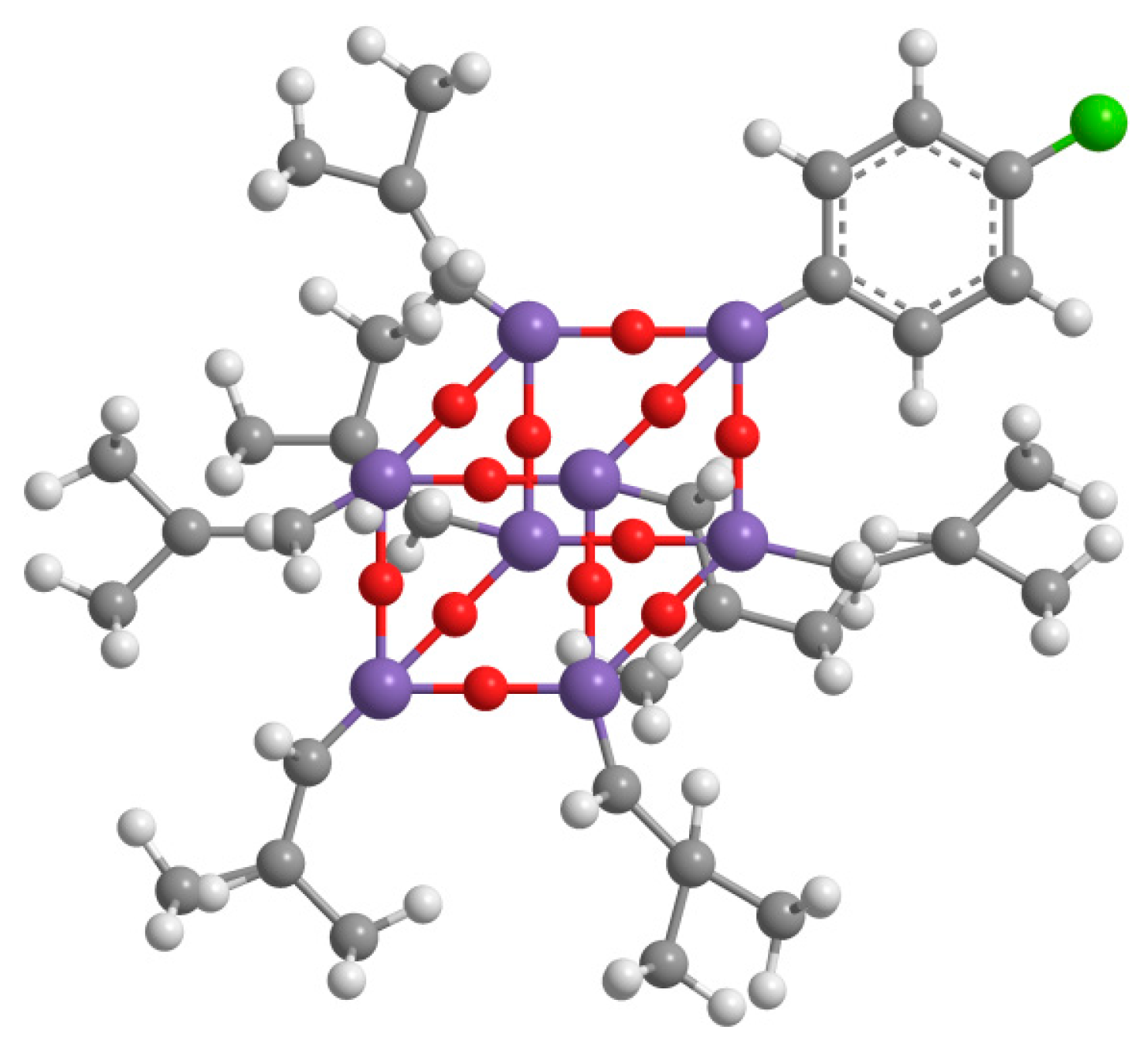
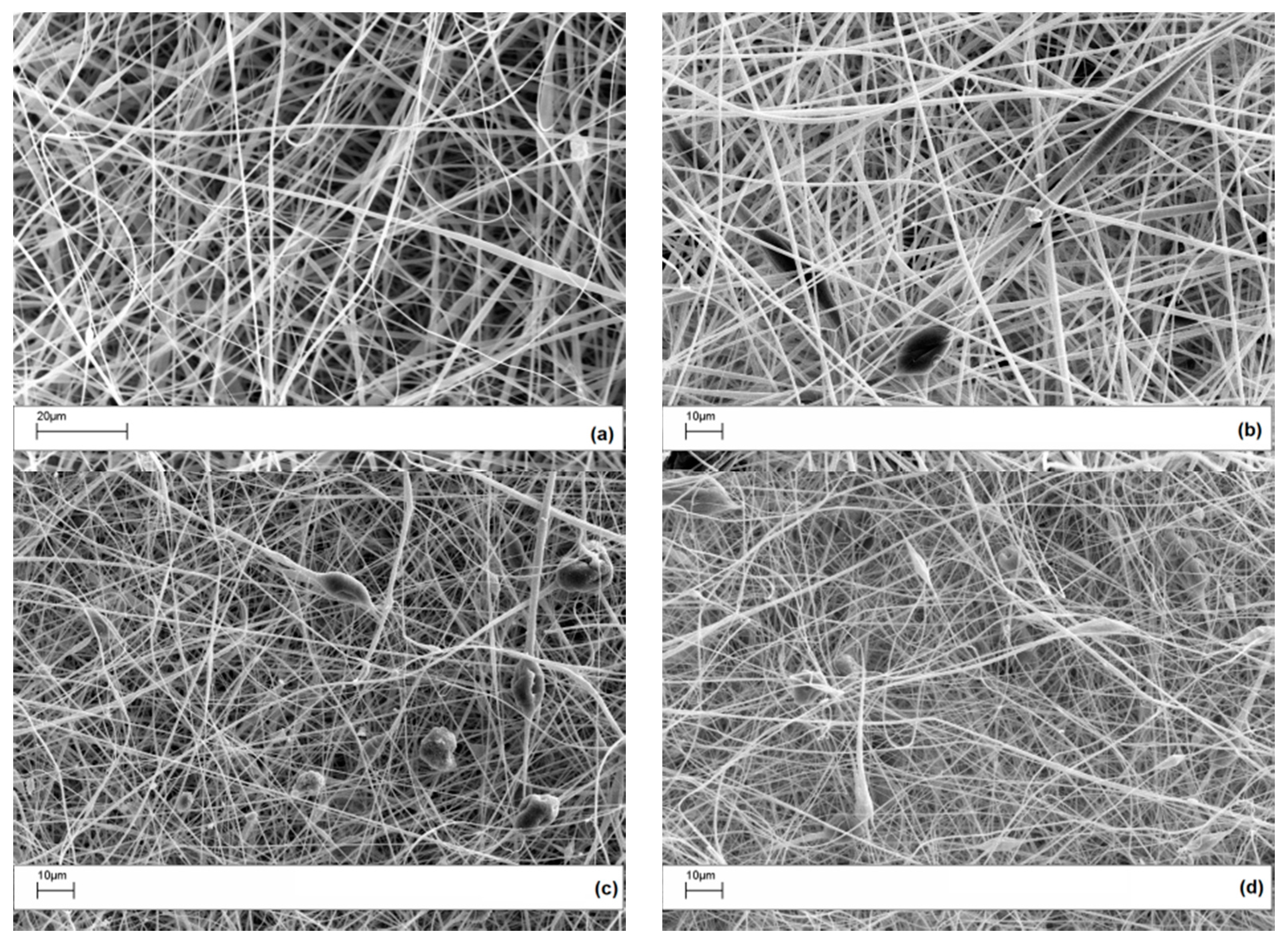
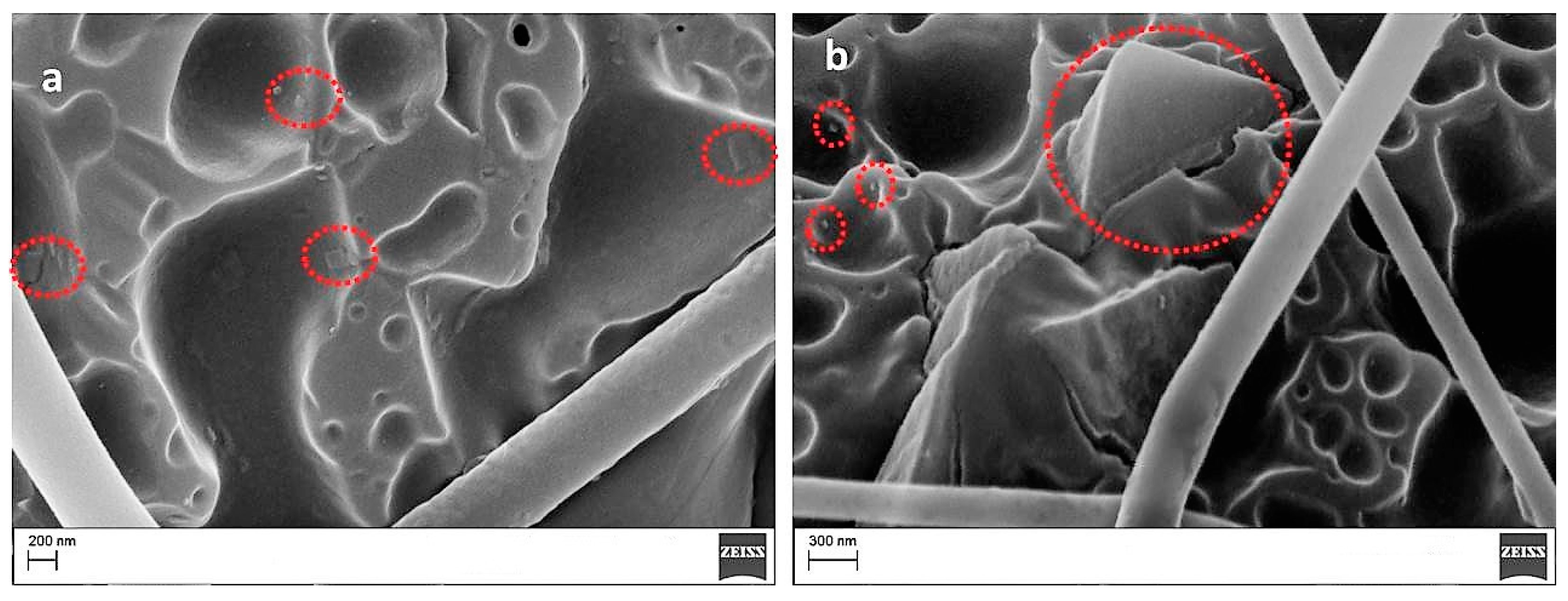

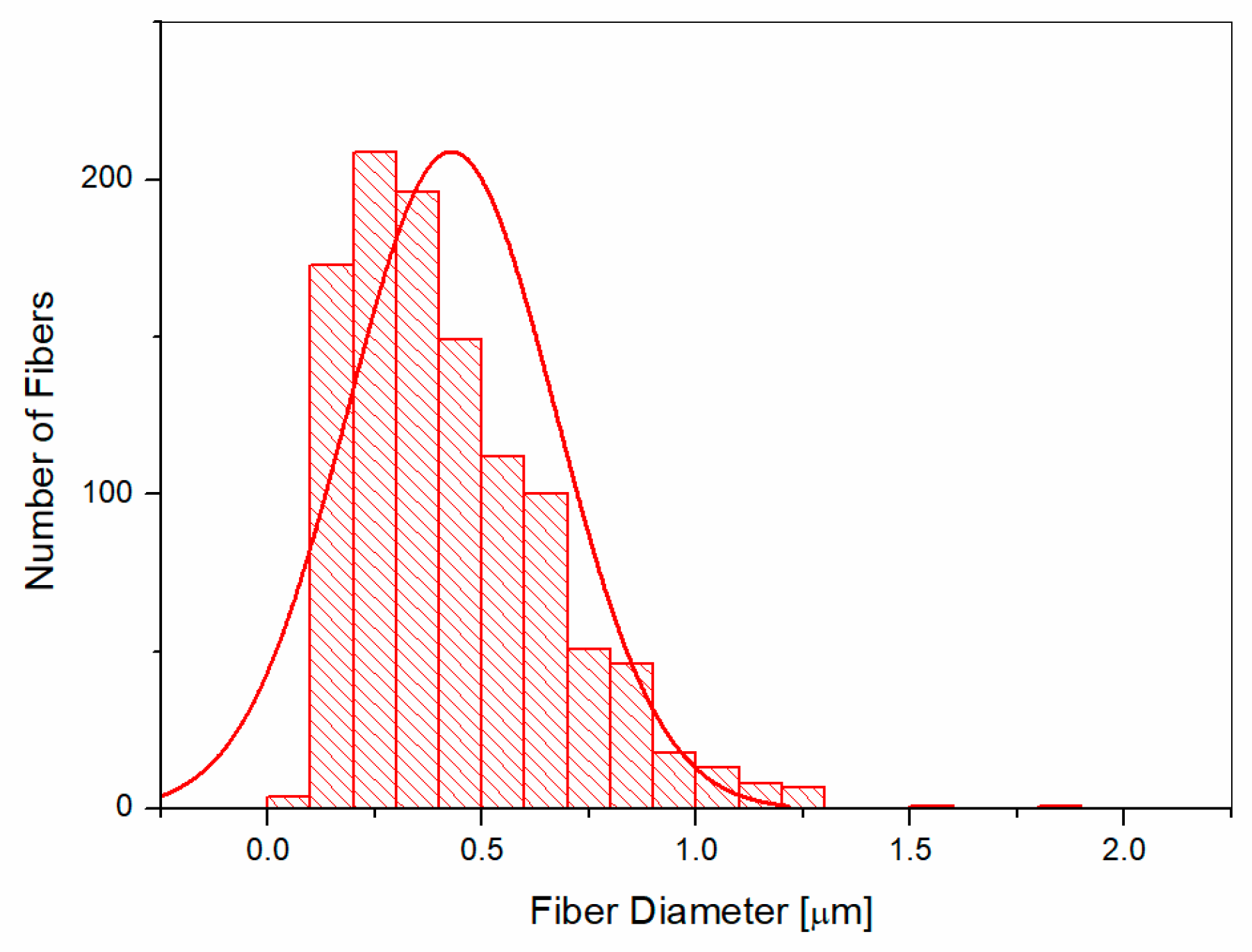

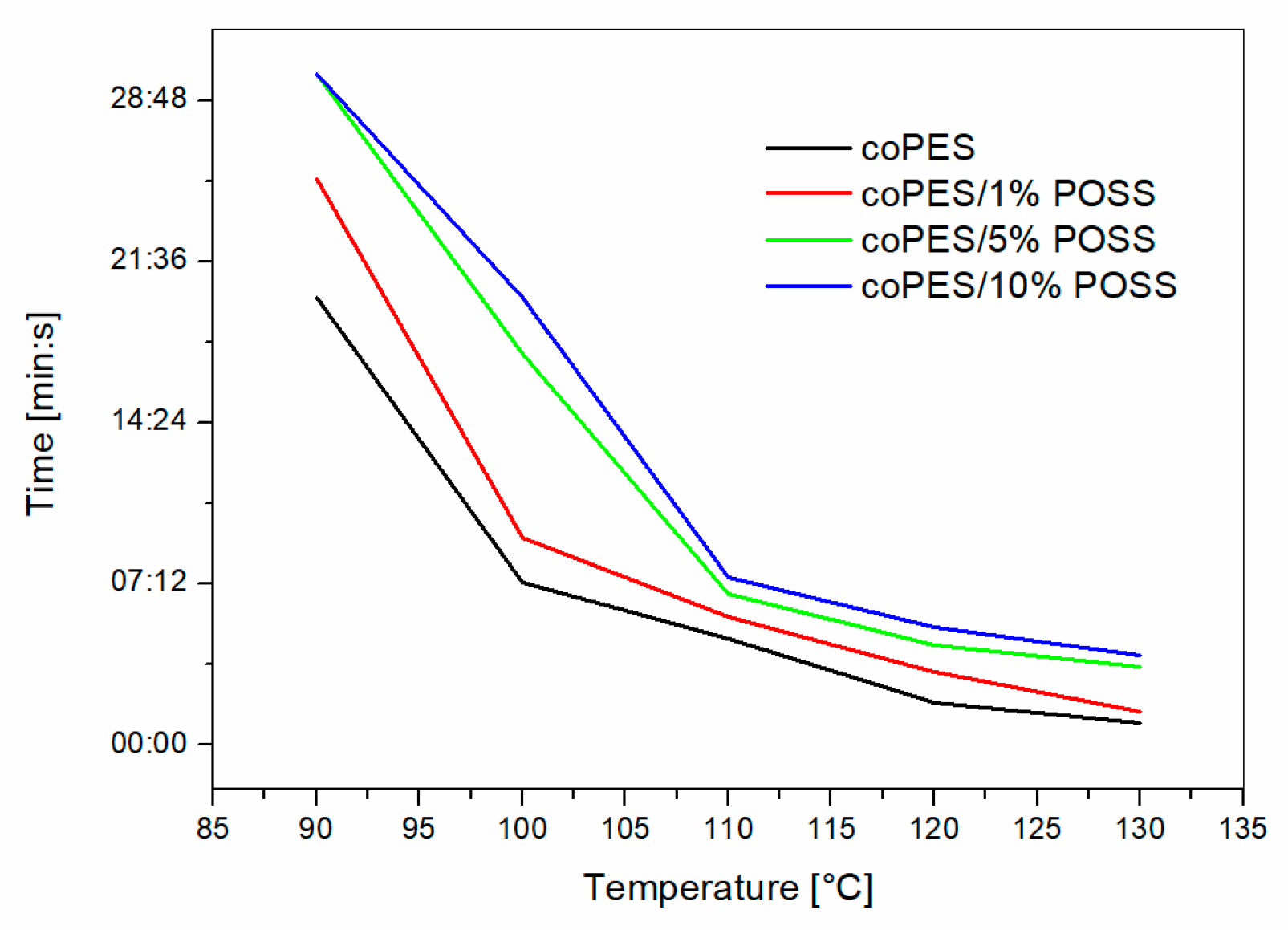
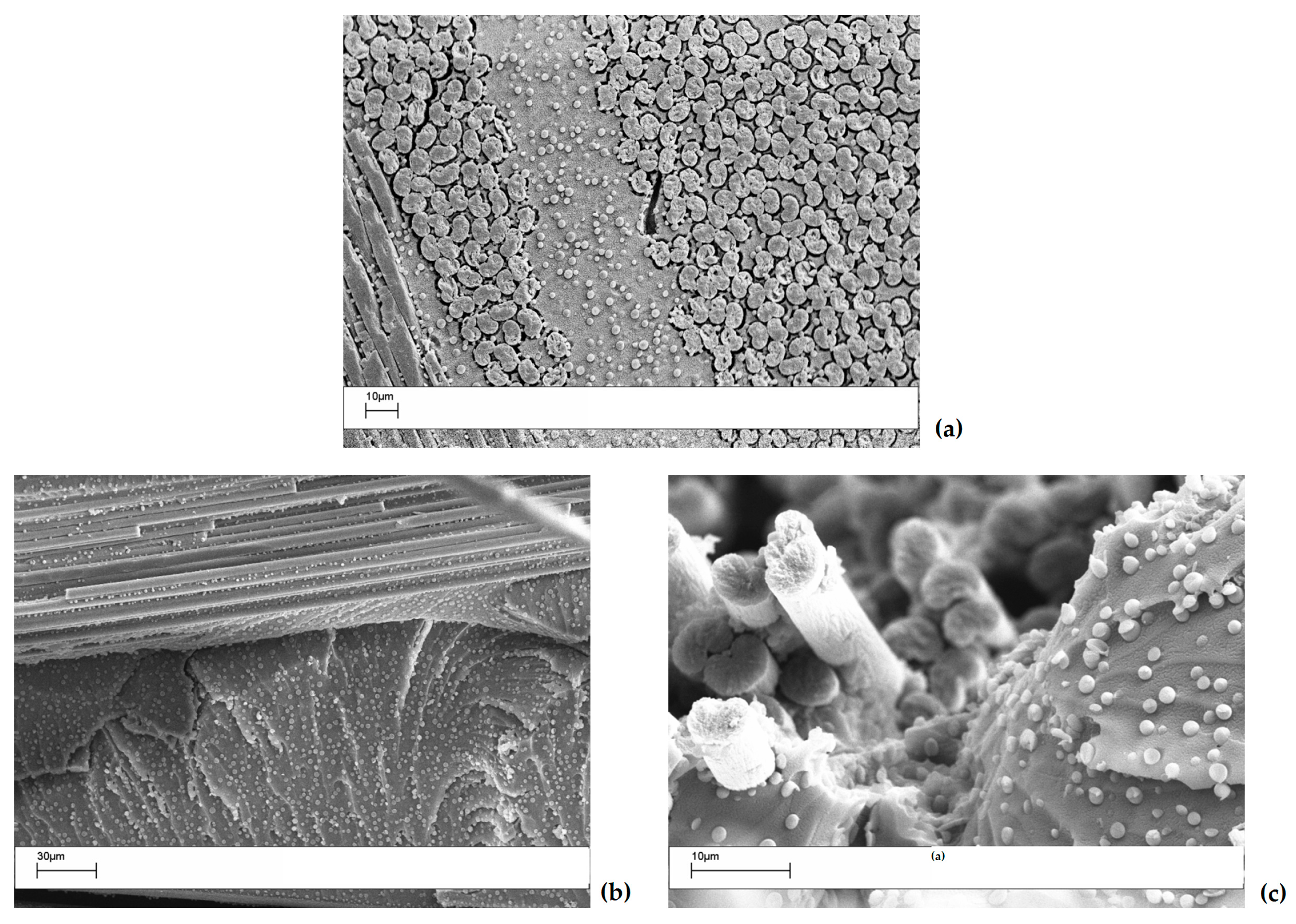
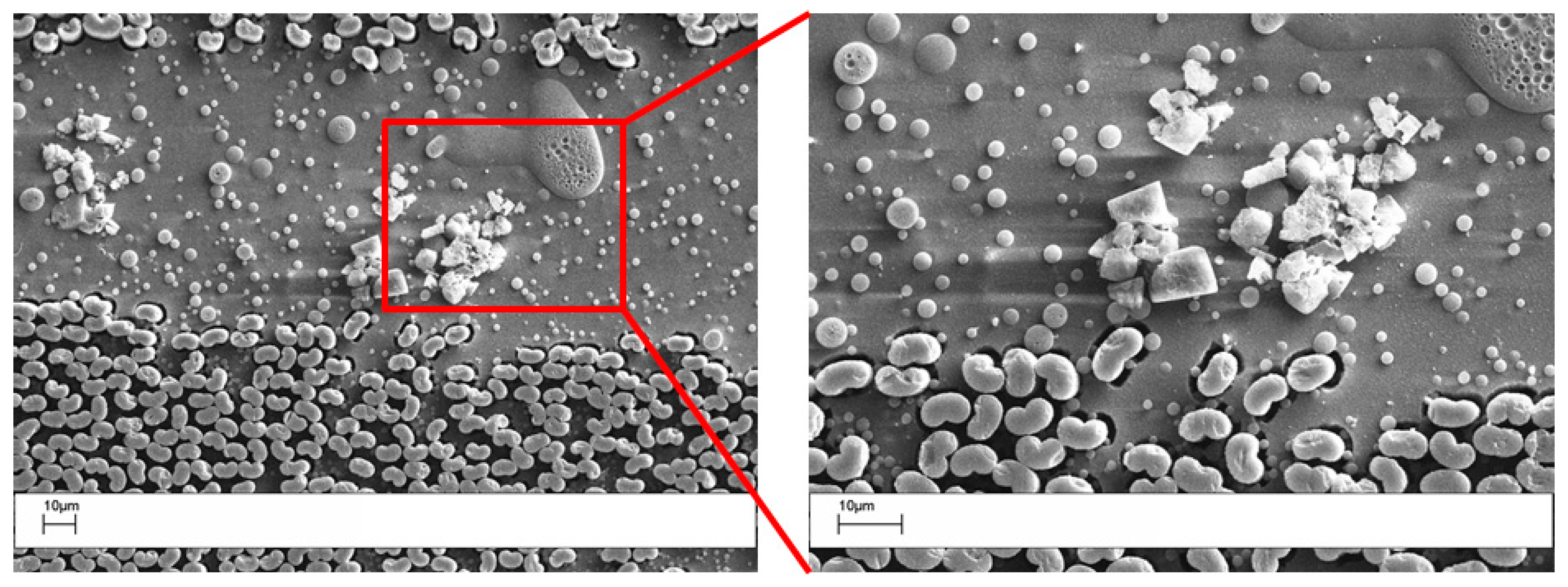
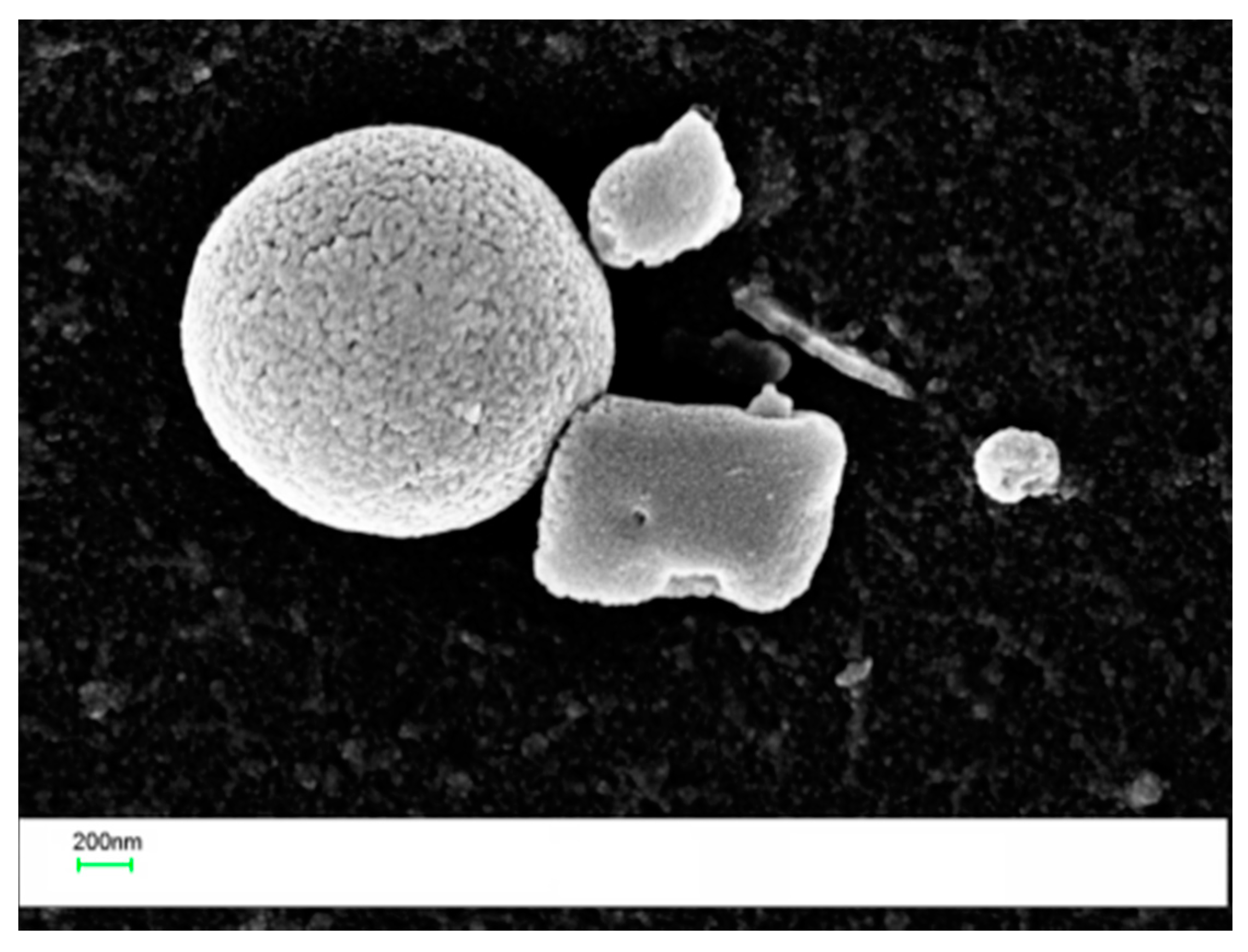


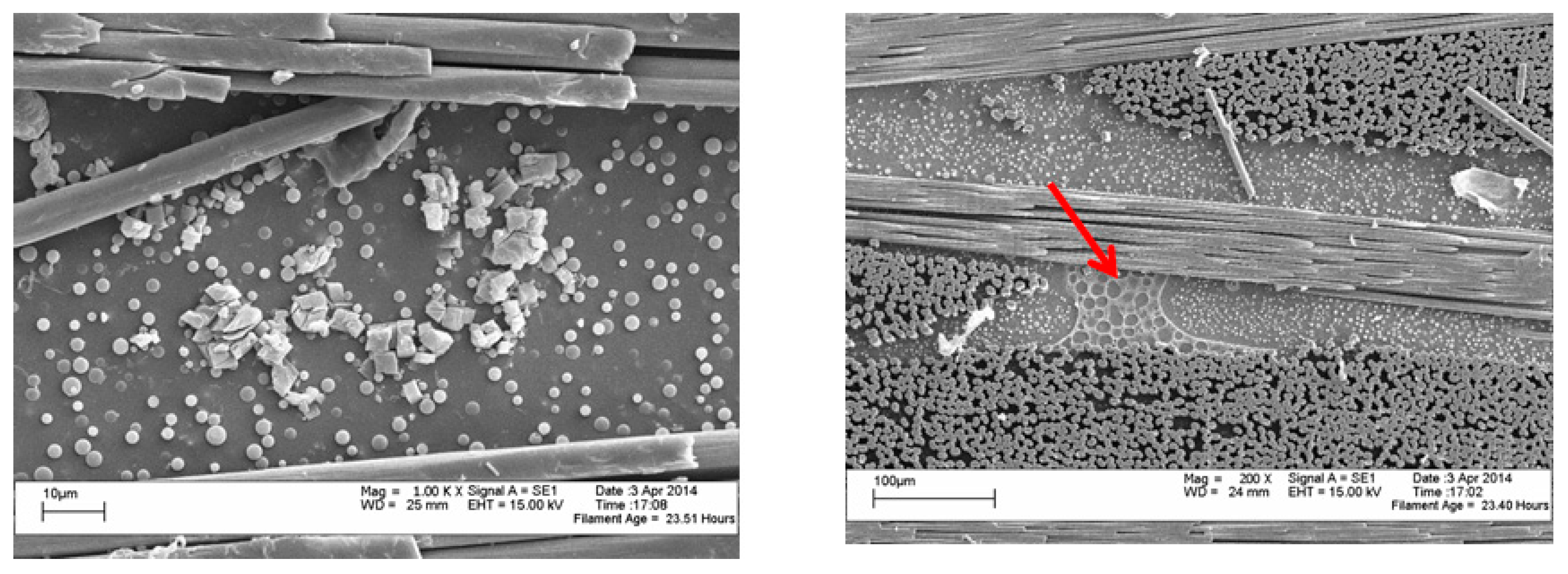

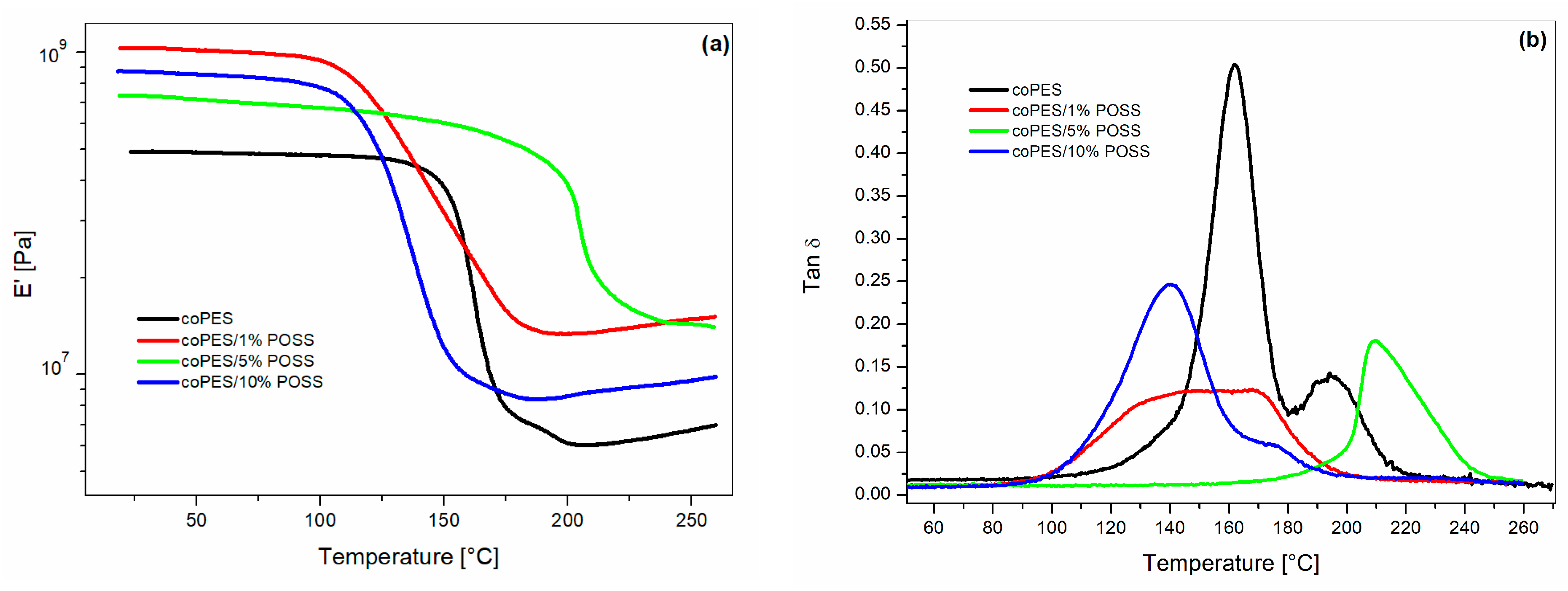
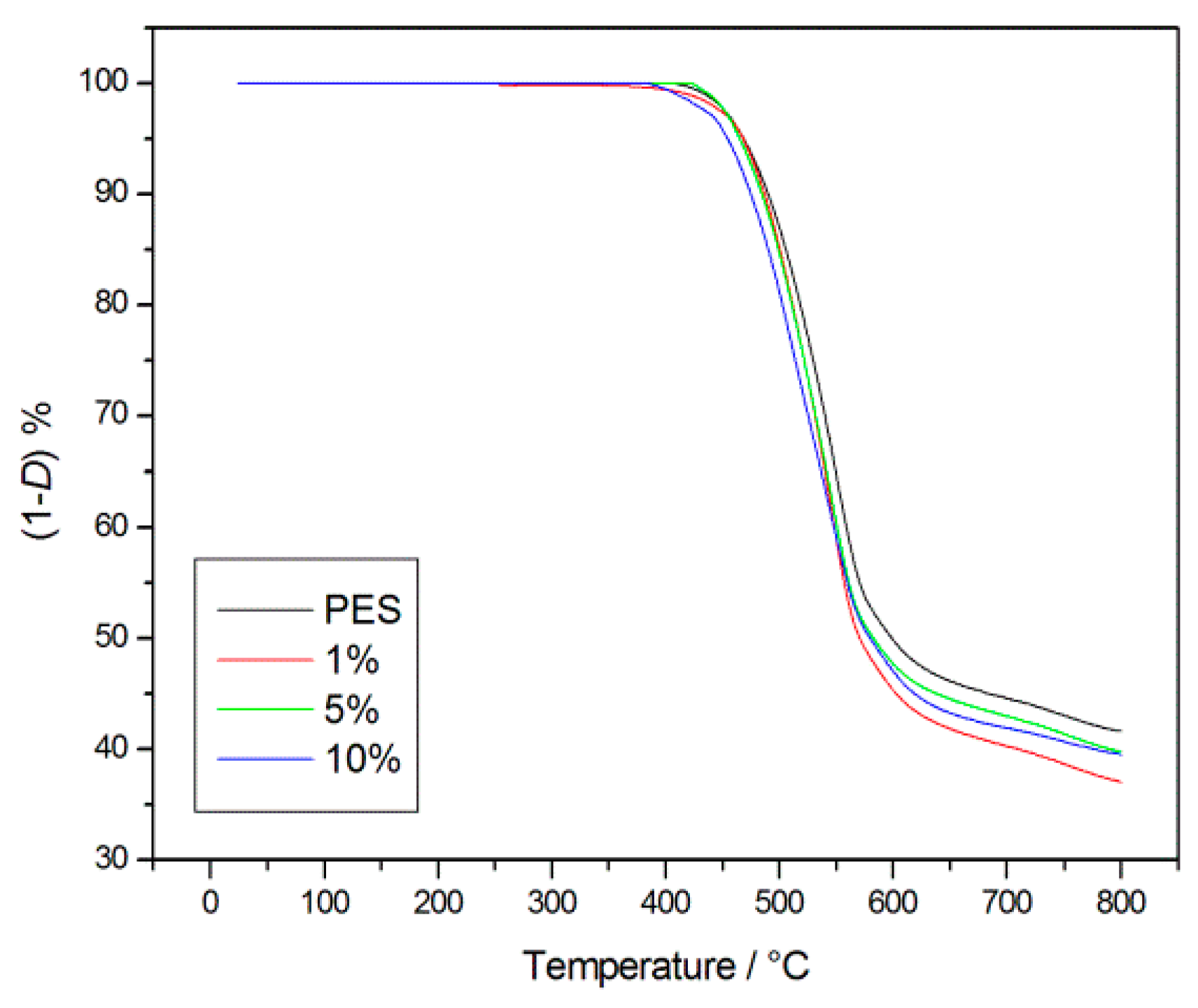
| POSS wt % | C | O | S | Si | Au | Cl |
|---|---|---|---|---|---|---|
| 0 | 80 | 11.5 | 6 | - | 2.5 | |
| 1 | 80.3 | 11.9 | 6.1 | 0.1 | 1.6 | |
| 5 | 78.2 | 10.4 | 8.5 | 0.3 | 2.6 | |
| 10 | 78.4 | 10.5 | 7.6 | 0.4 | 2.6 | 0.5 |
| Zone | C | O | S | Si | Au | Cl |
|---|---|---|---|---|---|---|
| 1 | 88 | 10 | - | - | 2 | - |
| 2 | 86 | 10 | 2 | - | 2 | - |
| 3 | 67 | 19 | - | 8.2 | 5.1 | 0.7 |
© 2017 by the authors. Licensee MDPI, Basel, Switzerland. This article is an open access article distributed under the terms and conditions of the Creative Commons Attribution (CC BY) license (http://creativecommons.org/licenses/by/4.0/).
Share and Cite
Cicala, G.; Blanco, I.; Latteri, A.; Ognibene, G.; Agatino Bottino, F.; Fragalà, M.E. PES/POSS Soluble Veils as Advanced Modifiers for Multifunctional Fiber Reinforced Composites. Polymers 2017, 9, 281. https://doi.org/10.3390/polym9070281
Cicala G, Blanco I, Latteri A, Ognibene G, Agatino Bottino F, Fragalà ME. PES/POSS Soluble Veils as Advanced Modifiers for Multifunctional Fiber Reinforced Composites. Polymers. 2017; 9(7):281. https://doi.org/10.3390/polym9070281
Chicago/Turabian StyleCicala, Gianluca, Ignazio Blanco, Alberta Latteri, Giulia Ognibene, Francesco Agatino Bottino, and Maria Elena Fragalà. 2017. "PES/POSS Soluble Veils as Advanced Modifiers for Multifunctional Fiber Reinforced Composites" Polymers 9, no. 7: 281. https://doi.org/10.3390/polym9070281







